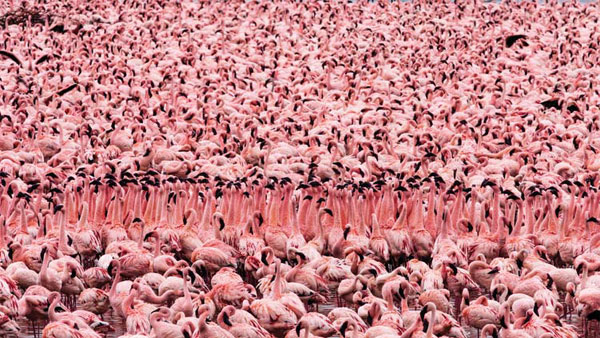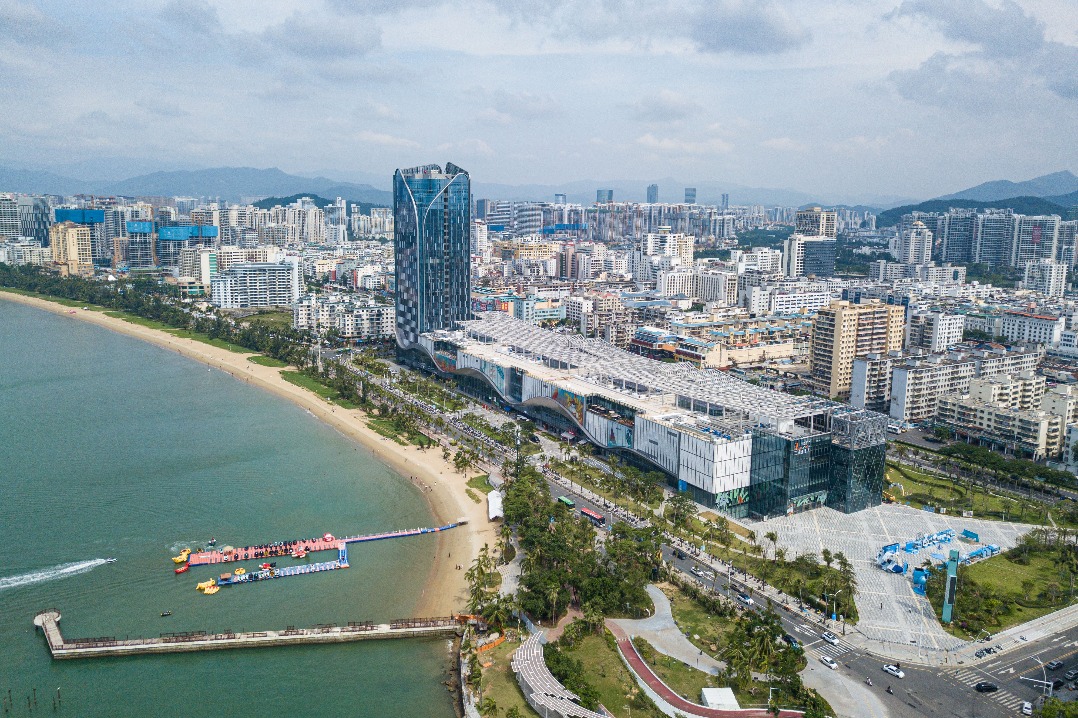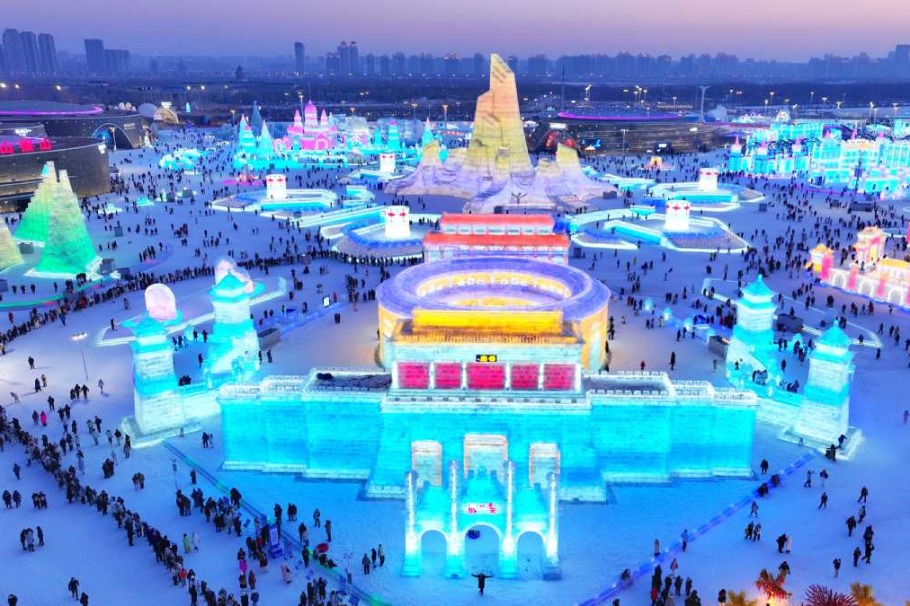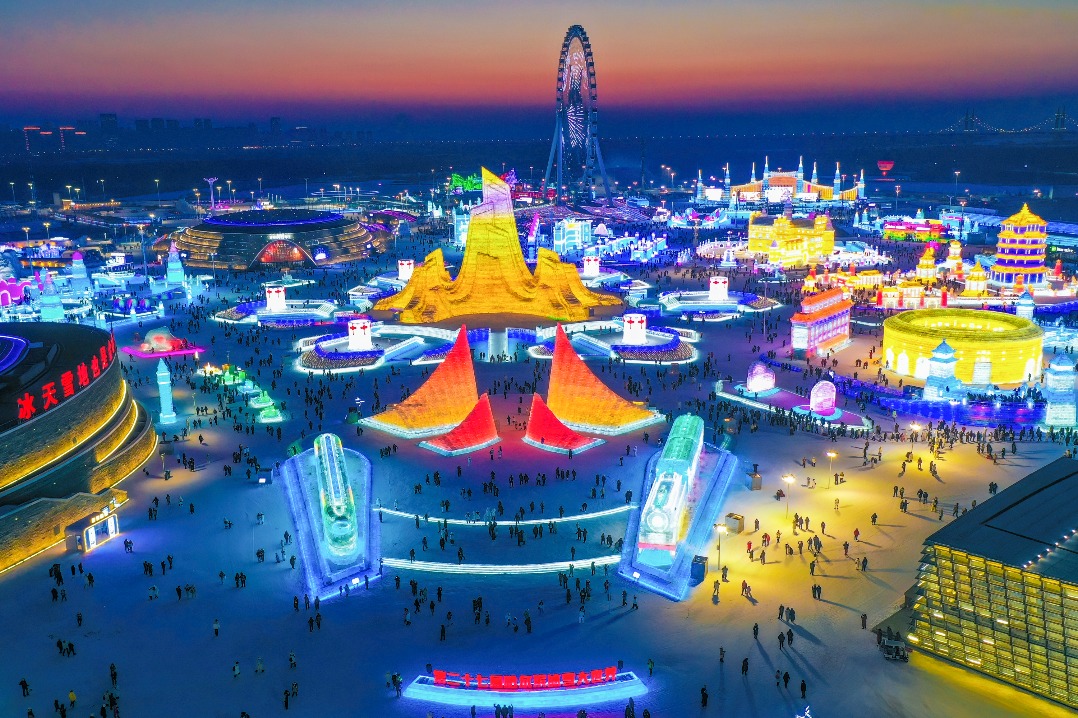Camera captures a parallel world

Photographs show that an environment full of vigor and harmony is needed by humans and animals alike
Photography is an art of both time and space. Or rather, more precisely, it is the art that footnotes and transforms time via space. In this way, a photographer can establish another dimension parallel to the real world. And photos present a scenic path to the photographer's inner world. Viewers can easily be attracted by Wang Xinmei's "parallel world": a journey of 50 years filled with ups and downs, laughter and tears. In his exhibition, The Utmost in Heart, the photographer shows how mankind and animals enjoy a long-standing but contradictory relationship. It shows how animals are tamed and worshipped, fed and sacrificed. It reveals how people treat them tenderly, sometimes like friends or partners, but also abuse or slaughter them at other times. The exhibition also shows how when man overrides nature, a distorted relationship forms between man and animal. The photographs point out that an environment full of vigor and harmony is needed by humans and animals alike. Since the 17th century, human civilization has witnessed huge progress. However, more than 300 species have disappeared in 300 years. So, do we continue this tragedy? Might we remember our friends only through photos one day? From Wang Xinmei's view, the answer is, let nature take its course.
| Penguins nest on the rocky ledges in the Arctic region. Photos by Wang Xinmei / For China Daily |
| Penguins on floating ice, a few miles off the Antarctic Peninsula. |
| Flamingos in Africa are easily recognized by their pink plumage. |
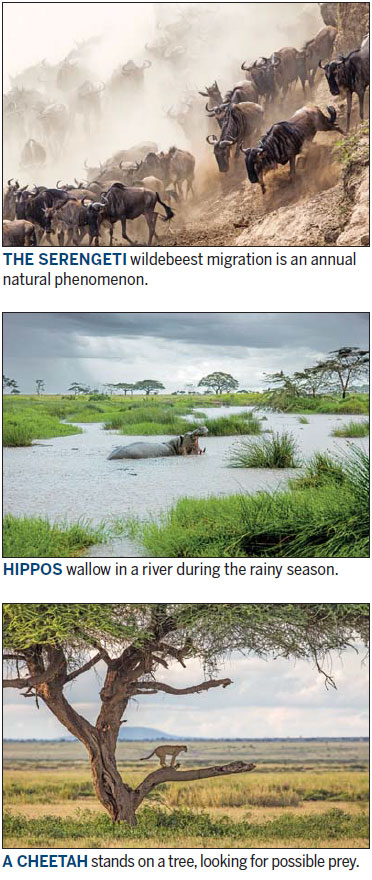

(China Daily Africa Weekly 04/14/2017 page4)
Today's Top News
- US plan for arms sales to Taiwan condemned
- China creates 12.1m new urban jobs
- Dialogue constructive way to rebalance trade
- AI needs to be governed wisely to ensure that it is beneficial for future of humanity: China Daily editorial
- China warns about Japan's intended military buildup
- China urges EU to halt anti-subsidy probes


















